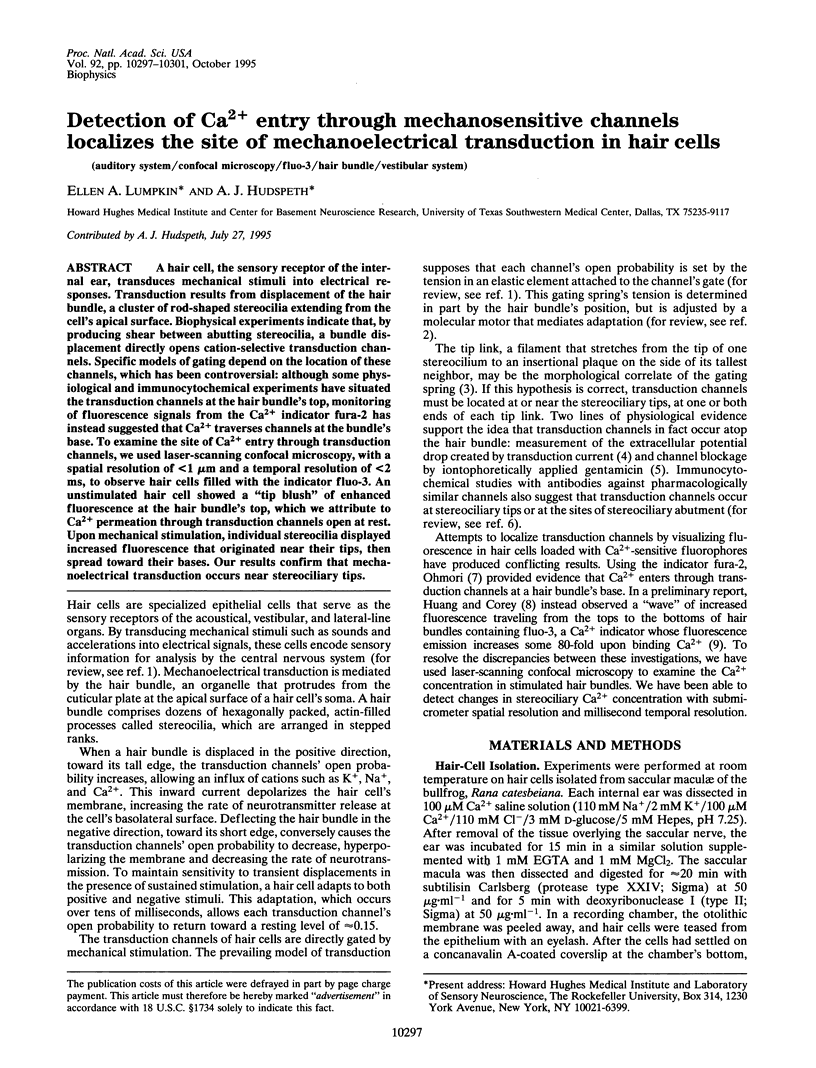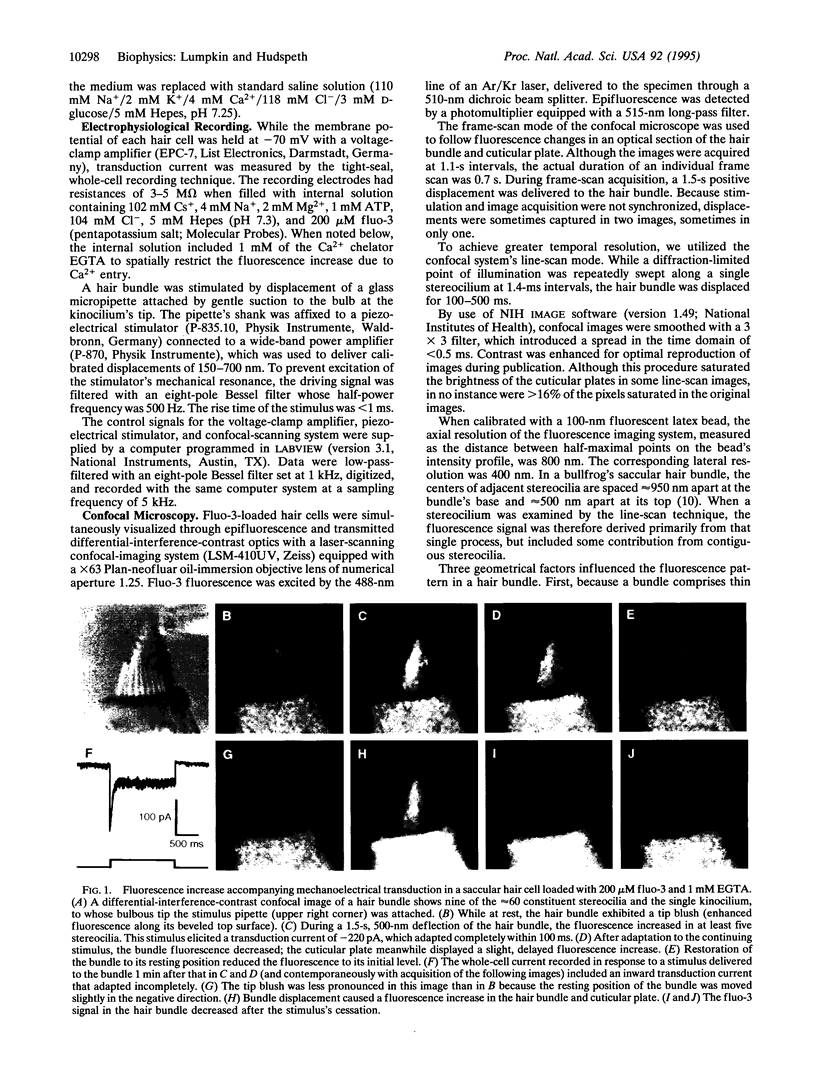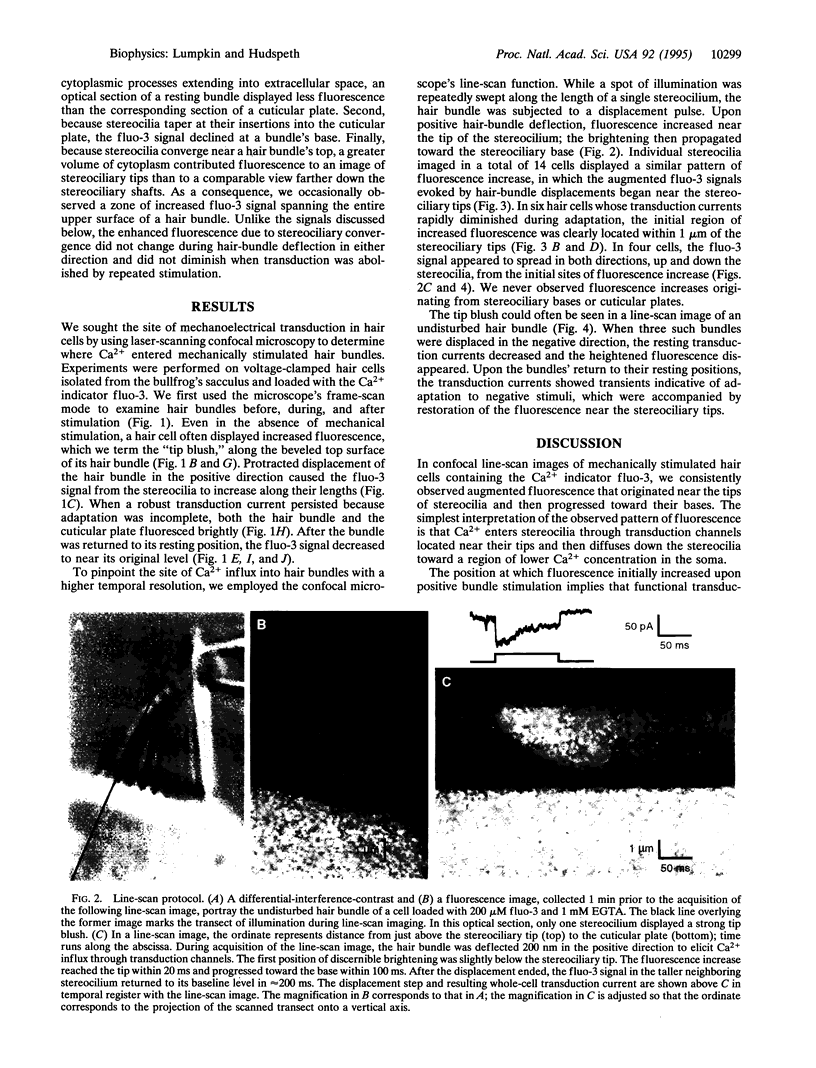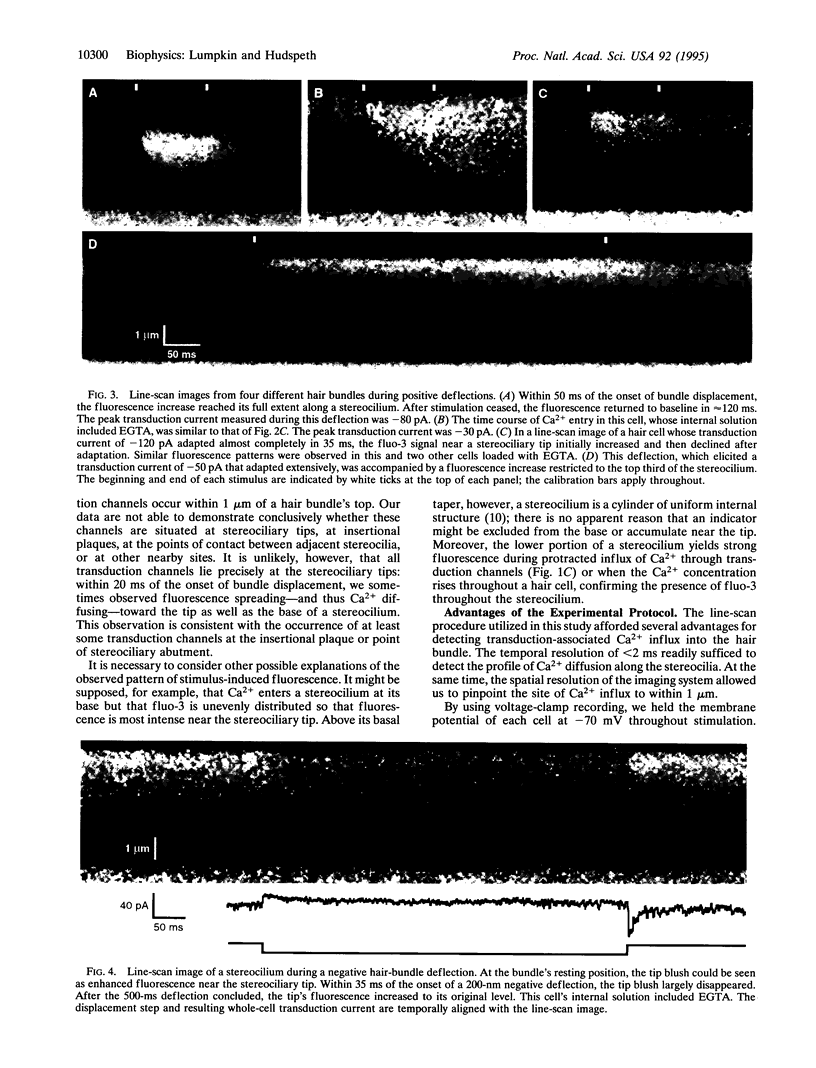Abstract
A hair cell, the sensory receptor of the internal ear, transduces mechanical stimuli into electrical responses. Transduction results from displacement of the hair bundle, a cluster of rod-shaped stereocilia extending from the cell's apical surface. Biophysical experiments indicate that, by producing shear between abutting stereocilia, a bundle displacement directly opens cation-selective transduction channels. Specific models of gating depend on the location of these channels, which has been controversial: although some physiological and immunocytochemical experiments have situated the transduction channels at the hair bundle's top, monitoring of fluorescence signals from the Ca2+ indicator fura-2 has instead suggested that Ca2+ traverses channels at the bundle's base. To examine the site of Ca2+ entry through transduction channels, we used laser-scanning confocal microscopy, with a spatial resolution of < 1 micron and a temporal resolution of < 2 ms, to observe hair cells filled with the indicator fluo-3. An unstimulated hair cell showed a "tip blush" of enhanced fluorescence at the hair bundle's top, which we attribute to Ca2+ permeation through transduction channels open at rest. Upon mechanical stimulation, individual stereocilia displayed increased fluorescence that originated near their tips, then spread toward their bases. Our results confirm that mechanoelectrical transduction occurs near stereociliary tips.
Full text
PDF




Images in this article
Selected References
These references are in PubMed. This may not be the complete list of references from this article.
- Hackney C. M., Furness D. N. Mechanotransduction in vertebrate hair cells: structure and function of the stereociliary bundle. Am J Physiol. 1995 Jan;268(1 Pt 1):C1–13. doi: 10.1152/ajpcell.1995.268.1.C1. [DOI] [PubMed] [Google Scholar]
- Hudspeth A. J., Gillespie P. G. Pulling springs to tune transduction: adaptation by hair cells. Neuron. 1994 Jan;12(1):1–9. doi: 10.1016/0896-6273(94)90147-3. [DOI] [PubMed] [Google Scholar]
- Hudspeth A. J. How the ear's works work. Nature. 1989 Oct 5;341(6241):397–404. doi: 10.1038/341397a0. [DOI] [PubMed] [Google Scholar]
- Hudspeth A. J., Jacobs R. Stereocilia mediate transduction in vertebrate hair cells (auditory system/cilium/vestibular system). Proc Natl Acad Sci U S A. 1979 Mar;76(3):1506–1509. doi: 10.1073/pnas.76.3.1506. [DOI] [PMC free article] [PubMed] [Google Scholar]
- Hudspeth A. J., Lewis R. S. Kinetic analysis of voltage- and ion-dependent conductances in saccular hair cells of the bull-frog, Rana catesbeiana. J Physiol. 1988 Jun;400:237–274. doi: 10.1113/jphysiol.1988.sp017119. [DOI] [PMC free article] [PubMed] [Google Scholar]
- Jacobs R. A., Hudspeth A. J. Ultrastructural correlates of mechanoelectrical transduction in hair cells of the bullfrog's internal ear. Cold Spring Harb Symp Quant Biol. 1990;55:547–561. doi: 10.1101/sqb.1990.055.01.053. [DOI] [PubMed] [Google Scholar]
- Jaramillo F., Hudspeth A. J. Localization of the hair cell's transduction channels at the hair bundle's top by iontophoretic application of a channel blocker. Neuron. 1991 Sep;7(3):409–420. doi: 10.1016/0896-6273(91)90293-9. [DOI] [PubMed] [Google Scholar]
- Minta A., Kao J. P., Tsien R. Y. Fluorescent indicators for cytosolic calcium based on rhodamine and fluorescein chromophores. J Biol Chem. 1989 May 15;264(14):8171–8178. [PubMed] [Google Scholar]
- Ohmori H. Mechanical stimulation and Fura-2 fluorescence in the hair bundle of dissociated hair cells of the chick. J Physiol. 1988 May;399:115–137. doi: 10.1113/jphysiol.1988.sp017071. [DOI] [PMC free article] [PubMed] [Google Scholar]
- Pickles J. O., Comis S. D., Osborne M. P. Cross-links between stereocilia in the guinea pig organ of Corti, and their possible relation to sensory transduction. Hear Res. 1984 Aug;15(2):103–112. doi: 10.1016/0378-5955(84)90041-8. [DOI] [PubMed] [Google Scholar]






